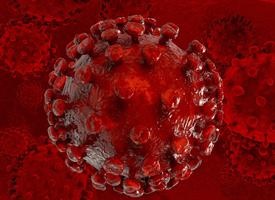 |
| Human immunodeficiency virus--Courtesy of URMC |
The efforts of two universities--one that developed the drug and one that developed the delivery system--have given way to a possible new HIV regimen that could cut treatments down to as few as one or two a year.
Along with URMC-099, a drug designed at the University of Rochester, researchers at the University of Nebraska developed a nanoformulation process for protease inhibitors (another class of HIV drug) to contain both as a crystal in a liposomal covering so they won't be broken down in the body before they've done their job. The technique allows a drug to become much more long-lasting than in its original form, so that instead of a daily pill regimen, HIV patients can receive treatment only every 6 months, according to a UR report.
As published in the journal Nanomedicine: Nanotechnology, Biology and Medicine, the nanoformulated protease coupled with URMC-099 eliminated measurable amounts of HIV in patients, in addition to upping the amount of the drug in immune cells, slowing down the process by which the drug breaks down and allowing it to last longer.
Originally, the scientists were investigating whether the protease inhibitor and URMC-099 could be safely administered together in patients who needed the drugs for different complications of HIV infection, but they found that the new drug helped extend the life of the protease inhibitor even further than did the nanoformulation process alone.
"The chemical marriage between URMC-099 and antiretroviral drug nanoformulations could increase drug longevity, improve patient compliance, and reduce general toxicities," lead author from the U. of Nebraska Howard Gendelman said in a statement. "We are excited about pursing this research for the treatment and eradication of HIV infections."
- here's the U. of Rochester report